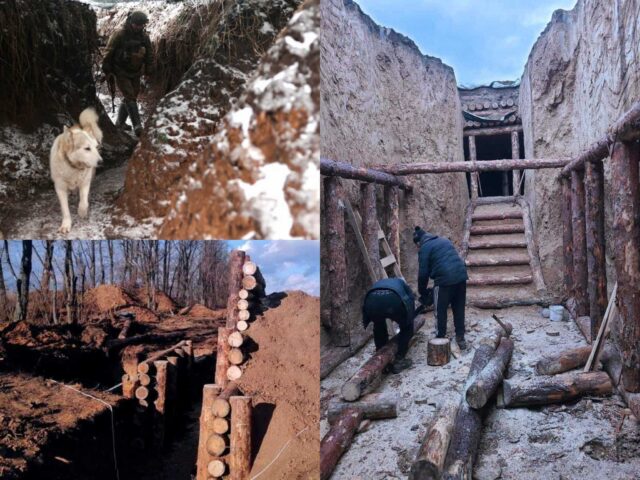The war in Ukraine is pivoting to “a more defensive posture… characterised by stasis” and Ukraine is digging in, showing off newly built major entrenchments, just weeks after Ukraine’s top general said the war has reached a “stalemate”.
Ukraine has “mobilised a concerted effort to improve field fortifications” as its armed forces “pivot to a more defence posture”, a British intelligence digest notes of the latest developments in the Ukraine War, at the end of a year which started with high hopes for the much-vaunted “Spring Offensive” but which has ended with “stalemate”.
Among the defences now being created by the Ukrainian government are major trench networks, the deployment of ‘dragon’s teeth’ anti-tank devices, and tank ditches. The Ministry of Defence report notes that while Russia continues to attempt to take ground, any real progress is “unlikely” and attacks are “rarely above platoon size”.
In all, “the front is characterised by stasis”, the review said.
На визначених ділянках тривають заходи із зведення фортифікаційних споруд підрозділами Державної спеціальної служби транспорту. Нарощуємо лінію оборони та створюємо захисні споруди для особового складу.
Posted by Державна спеціальна служба транспорту / UA State Special Transport Service on Wednesday, December 20, 2023
In recent days, elements of the Ukrainian state have also talked about the work to create defences, reflecting how the nation perceives the war as developing away from one of offence. The State Transport Special Service logistical corps wrote this week in a social media post illustrating significant new earthworks that “the construction of fortification structures by units of the State Special Service of Transport are ongoing. We are increasing the line of defence and creating protective structures for personnel.”
The reflection of the state of the war in Ukraine by one of the nation’s closest allies comes not long after blunt remarks by Ukraine’s top military officer, General Valery Zaluzhny, who said in November he was now spending his time reading academic works on trench warfare of the Great War, as he found that more relevant to the conflict than modern NATO doctrine.
He said: “Just like in the first world war we have reached the level of technology that puts us into a stalemate… There will most likely be no deep and beautiful breakthrough.”
The General’s remarks touched on the proliferation of drones in Ukraine, the new and ubiquitous technology increasing battlefield intelligence to a point where both sides know what the other is doing at all times, making surprise assaults essentially impossible. He said of the First World War: “I realised that is exactly where we are because just like then, the level of our technological development today has put both us and our enemies in a stupor… The simple fact is that we see everything the enemy is doing and they see everything we are doing.”
Unfortunately, it seems the return of trench warfare may also herald the return of trench warfare tactics that may have been thought a relic of the past. As Ukrainian state media reported this week, soldiers in the southern Zaporizhzhia region were subjected to poison gas, allegedly “a form of CS gas”. If true, the use of gas in warfare could constitute a war crime, according to the laws of war as constituted by the United Nations.
A soldier who is said to have borne witness to the attack was cited in the report as saying: “At first I saw smoke. We ran out from the trench and the gas suddenly caught fire. The trench was in flames. This gas burns, blinds you, you can’t breathe, shoots down your throat immediately. We didn’t even have a second.”
Ukraine and Russia May Never Sign Peace Treaty, Warns Kyiv’s Intelligence Chief https://t.co/PkfGki9i1V
— Breitbart London (@BreitbartLondon) November 17, 2023

COMMENTS
Please let us know if you're having issues with commenting.